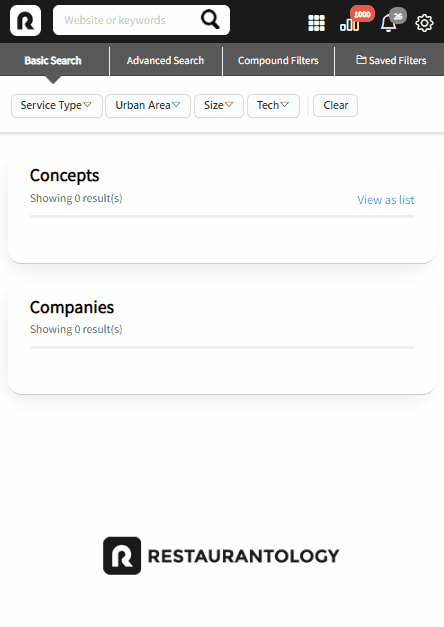Ownership and franchisees
How Restaurantology defines ownership structures, franchisee relationships, and roll-up logic.
Updated over a week ago
Ownership structures in the restaurant industry are complex and often fragmented. To maintain clarity and avoid data duplication, Restaurantology applies a consistent logic to represent ownership and franchise relationships.
Definitions
- Owner/Parent: A Company with decision-making authority over one or more Concepts. Parent status is assigned only when this authority exists, not for passive investors.
- Franchisee: A business entity that operates one or more Units under a licensing agreement with a Concept. Franchisees may own Units across multiple Concepts or even unrelated brands.

Hierarchy structure
Most data follows this hierarchy:
Unit → Concept → Company (Parent/Owner)
In more complex ownership scenarios, particularly involving franchisees, Restaurantology may represent:
Unit → Franchisee → Concept → Company (Parent/Owner)
[!NOTE]
While this four-level structure is technically possible in many CRMs, reporting often becomes increasingly difficult beyond three levels. Fields and relationships from a global parent may not be easily accessible from Accounts that are four (or more) levels down.
Franchisee roll-up logic
Franchisees are assigned to parents only when one of the following applies:
- The franchisee operates Units solely within a single Concept.
- The franchisee operates multiple Concepts within the same Parent/Owner.
If a franchisee owns Units across unrelated brands (e.g., both IHOP and Jack-in-the-Box), Restaurantology treats them as unparented franchisees to avoid misrepresenting decision-making authority.
Parent assignment principles
Restaurantology only assigns a parent when:
- The Parent/Owner has decision-making authority over technology or vendor adoption.
- There is verified operational control, not just financial investment.
[!NOTE]
Investors like Roark Capital are excluded unless they exert direct operational control.
Why this structure matters
This approach ensures:
- Data clarity: Consistent relationships between Units, Concepts, and Companies.
- Accurate TAM calculations: Avoiding double-counting by rolling up to the highest decision-making level.
- RevOps alignment: Clean data that matches CRM hierarchies and supports reliable sales coverage and reporting.
[!NOTE]
Restaurantology is not a franchise repository. Franchisee profiles are included only when they meet Restaurantology’s multi-unit profile standards, including a unique website for verified unit counts, technology detections, and profile disambiguation. As a result, franchisee representation in the dataset is limited by design.
Franchisee complexity
While Restaurantology reflects franchisee relationships where possible, some limitations exist:
- Franchisee ownership changes frequently and may not be publicly disclosed.
- Some franchisees operate as LLCs or holding companies with minimal visibility.
- SFDC and similar CRMs often limit practical parent-child roll-ups to three levels.
For users seeking deeper insights into franchise-related GTM challenges, Restaurantology’s blog series “The Industry’s F-Word” provides strategic guidance and best practices.
Next, continue to Territory →

